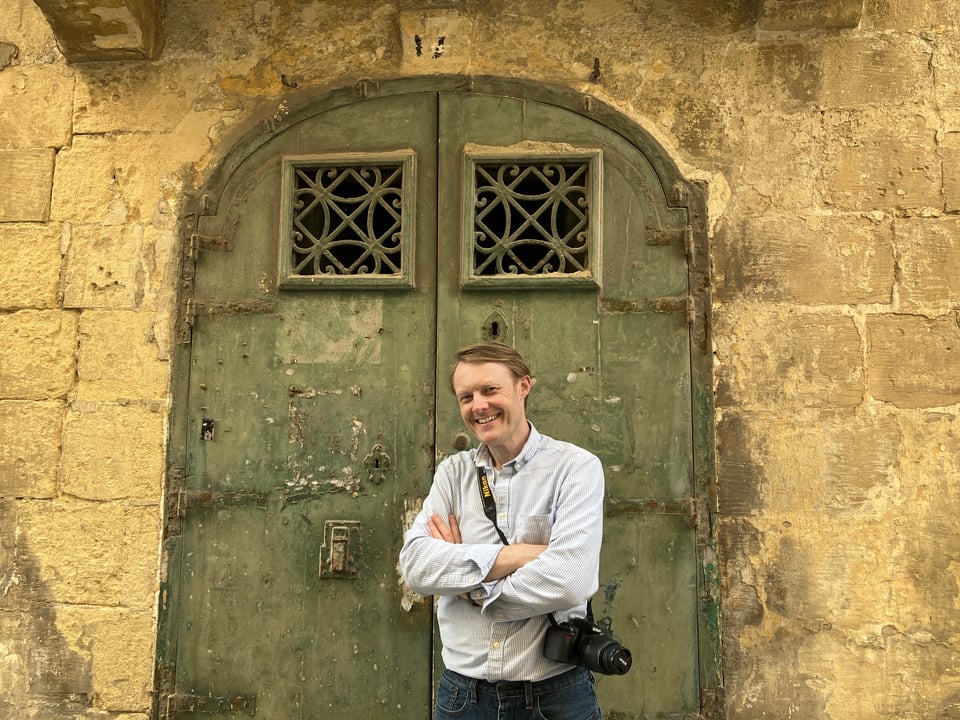Maltese Sketches
Notes from a trip taken November 13-17, 2024.

I stared out over the city walls of Valletta and across the water at the three fingers of land that reached back toward me. Everything was of the same honey-colored stone, but stained with grime. Or stained with time, as I would decide in the days to come. I knew vaguely that they were known as the Three Cities. At the end of one finger was a fortress, and on the other side of a small harbor buildings with windows that climbed up, each a little higher than the one before, in a line which must have accompanied a ramp on the inside of the building. The view was like something out of a dream, where a variety of familiar geography has been blended together until it no longer resembles anything known. As I walked back up the street where Oya and Julia waited for me, the wooden, glassed-in balconies, called galleria, painted green, gave me the same feeling: I recognized some version of them, as I did the apartments they were attached to, but not together like this. The language of Malta would strike me in a similar way. Was it Arabic pronounced with an Italian accent?
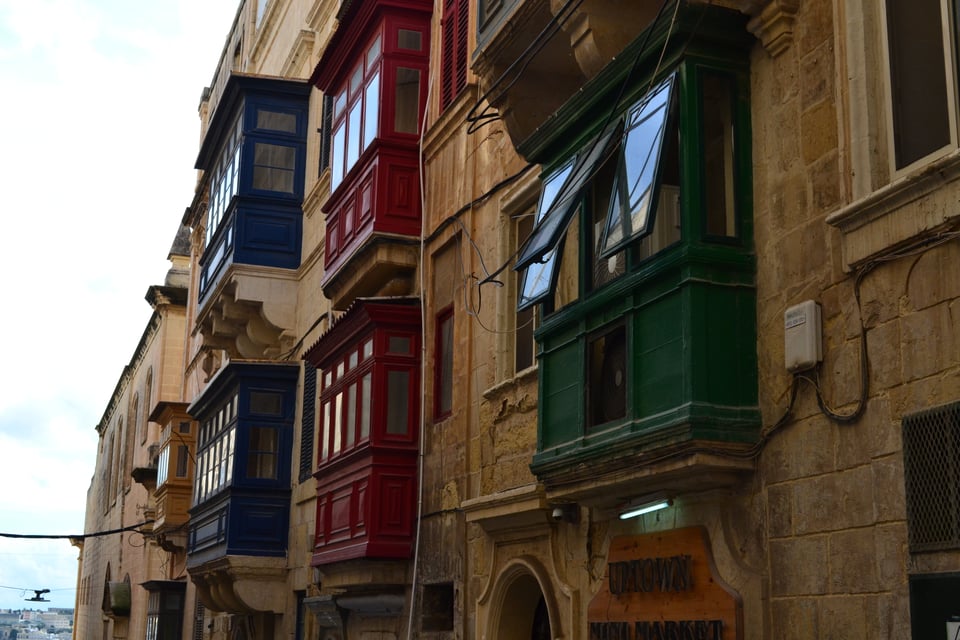
Wandering in Valletta can hardly be called wandering, because there is no chance of getting lost. The streets of the smallest capital city in Europe were laid out in a perfect grid by the Knights of St. John. Maybe this is why Valletta is best at night, when there is a sense of not knowing exactly where you are. After dinner, we ventured further from the main street, Triq ir-Repubblika, to a little square on the side of St. Paul’s Cathedral, the light of a full moon falling on its columns and friezes as well as on a lone cypress tree in a roundabout. Where had I come?
Valletta by day is more mundane, more English. You notice that they drive on the left side of the road or that there are red telephone booths like the ones in London. There are signs advertising wares from Britain or a full English breakfast. Even the electrical outlets are British. And the British have been here for a long time. I spotted a sign: SAMUEL TAYLOR COLERIDGE WORKED HERE 1804-1805. After breakfast we visited St. John’s Co-Cathedral to see the Caravaggios. From Rome to Naples to Malta, I have followed this one painter from church to church. Malta was the penultimate stop in his many years of fleeing the law, and here he painted his Beheading of St. John, featuring John the Baptist’s final moments before his head is put on a plate. The painting covers an entire wall of the cathedral’s oratory—the same room where Caravaggio would later be defrocked from the Order of the Knights of St. John, his own head put upon a plate, so to say. Unlike the paintings in Rome and Naples, there were no angels, no heavenly light, just a gruesome death with spectators present.
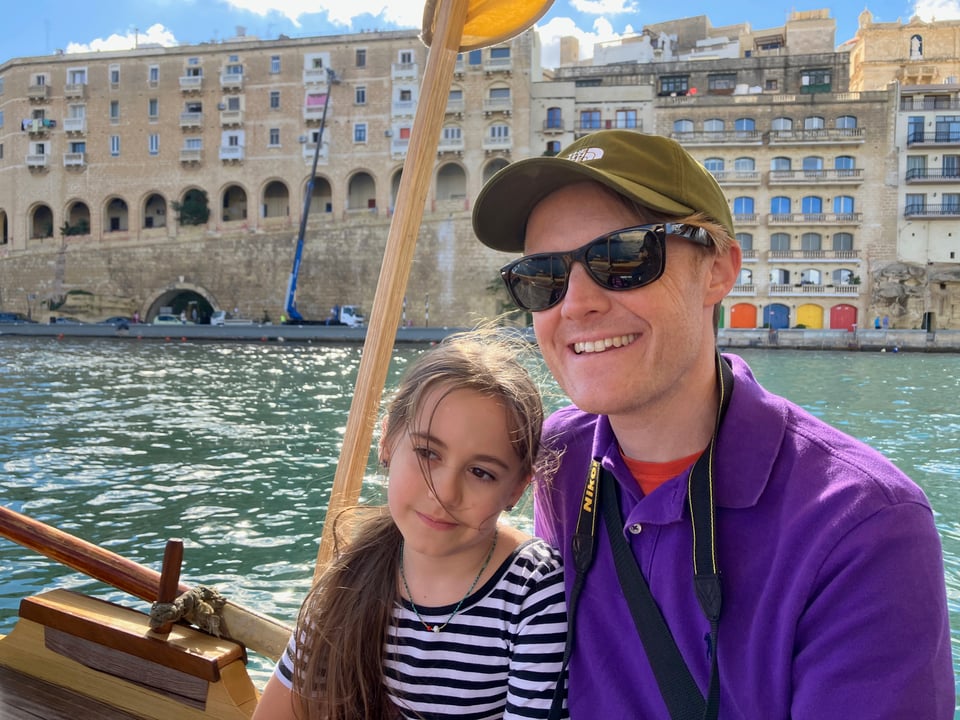
A massive outdoor elevator leads from the Upper Barrakka Gardens to the waterfront where you find a small pier where gondolas travel to the Three Cities. We asked to be taken to Birgu, the finger with the fortress at the end of it. As we drew closer and closer to the view I had seen the day before, the details came into focus, and the strange shapes, including the windows I had spotted in the walls, started to make more sense. The gondolier slowed the motor and rowed us through the harbor to the shore. Birgu was the Order’s first stronghold before they contructed the larger Valletta. Today there is not much there: simply quiet neighborhoods, with narrow streets. We wandered for an hour or so (and here you really can wander) but hardly found an open restaurant. Each street was as beautiful as the one before it, but it didn’t evoke the feeling it had when I had seen it from afar just the day before.
Malta has some of the world’s oldest megalithic structures—older than Stonehenge, or even the Pyramids. The Hypogeum, a massive burial complex that operated for millenia, was discovered 100 years ago under a neighborhood in a small town not far outside Valletta. Groups of ten are taken through the complex by a guide. At the entrance, where a set of metal steps leads into the first of several levels, the guide points out a place where the kitchen floor tiles from the house that once stood there are intact. It brings to mind Alice Munro’s quote about people’s lives being “deep caves paved with kitchen linoleum.”
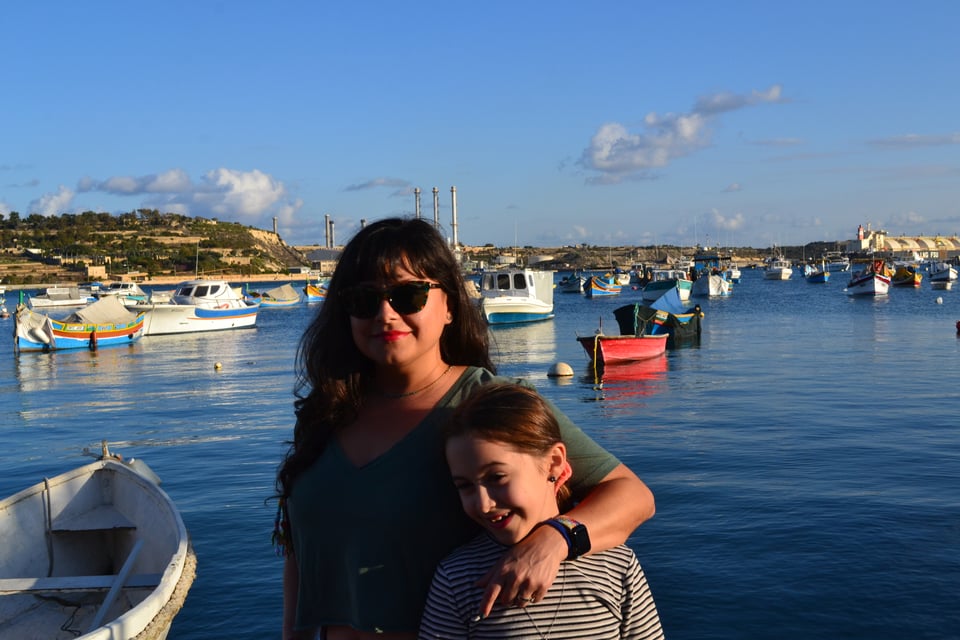
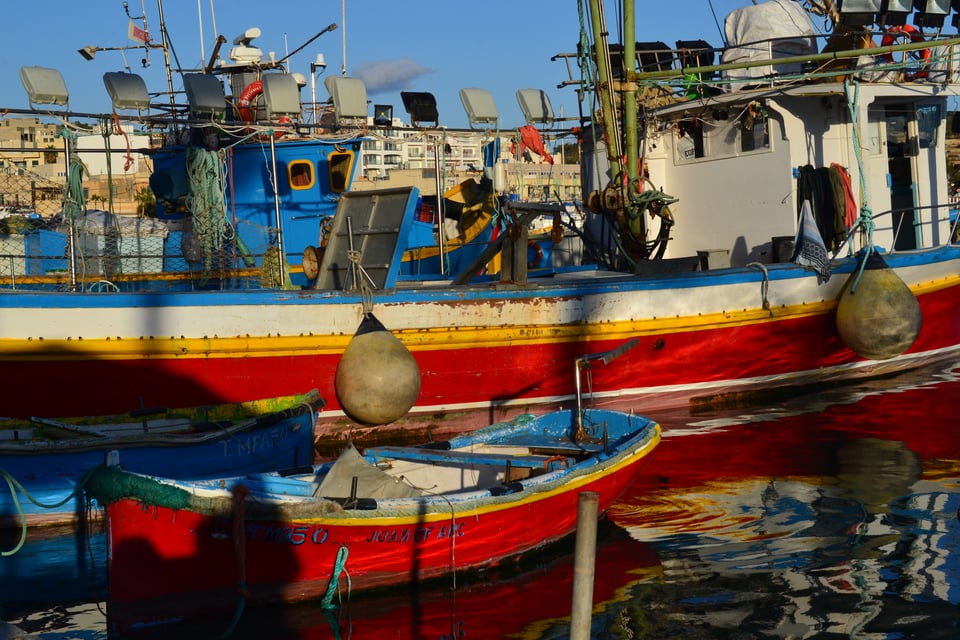
It’s hard to explain what we saw underground, and we weren’t allowed to take photographs, but it left an impression that was hard to shake. When we returned to the land of the living, it was lunch-time. We took another bus to a town called Marsaxlokk, lured in by photographs: dozens of wooden fishing boats painted blue and yellow, red and green bobbing in a harbor lined with palm trees. When we arrived, it was just as in the postcard-image, the scene part-Egypt, part-Italy. We found a seafood restaurant and ordered aljotta, Maltese fish soup, and seafood pasta. I had spaghetti with squid ink.
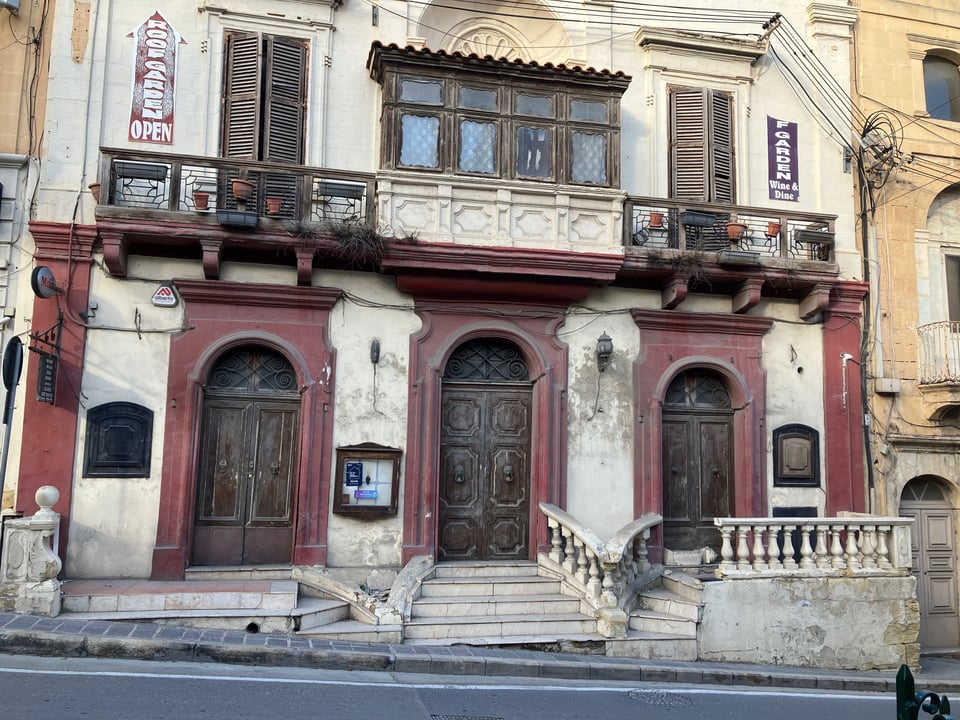
The flavors of Malta are as eclectic and hard to place as the architecture. For breakfast they eat pastizzi, a flaky pastry shaped like a seashell, full of mushy peas. The national dish is a rabbit stew. There is a popular soft drink, Kinnie, made from bitter oranges.
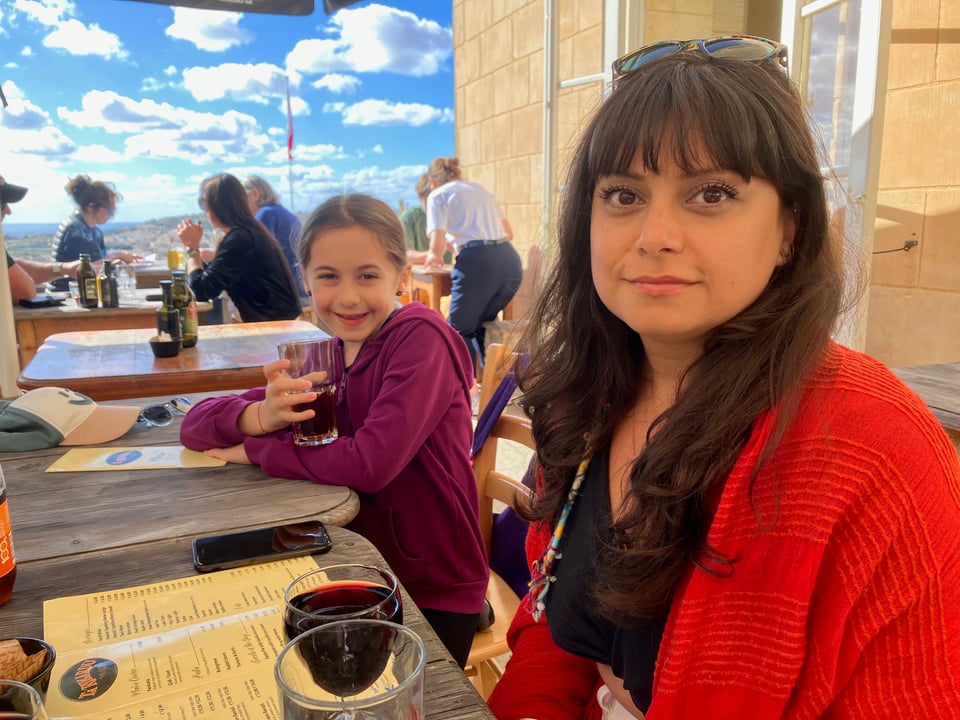
The country is split between the islands of Malta and Gozo. Gozo is reached quickly by fast ferry for the traveler who can stand lurching up and down on the waves for 45 minutes. Stumbling onto land again, you feel you’ll never be able to face the return trip. A short bus ride takes you to Victoria, the “capital city” of Gozo. The rest of the island is easily reached from here. And it becomes quickly apparent that there is an entire second country of small towns and cathedrals and megaliths and rock windows that mirrors the one on the island of Malta. We never made it outside of Victoria. We hardly made it out of the citadel. A hand-painted sign in an alley with green and yellow lettering seemed so inviting that we couldn’t help follow it inside and then up flights of twisting stairs to a rooftop beside a belfry, that afforded a view over one whole side of the island. I had a lunch of rabbit and a glass of Gozo wine, and for a moment the conflicting flavors of the country came together in a way that had evaded me until now.
